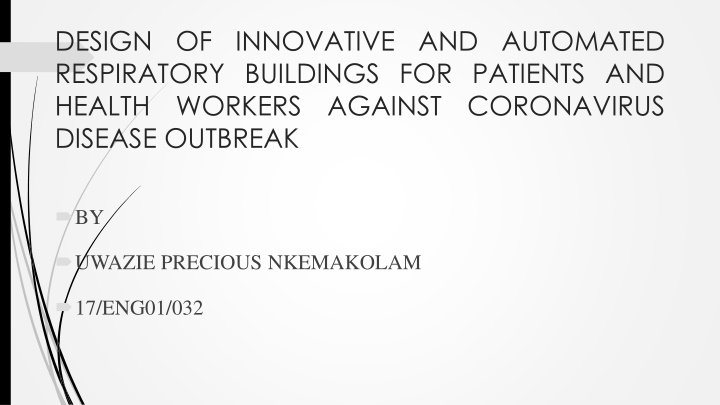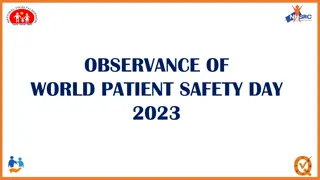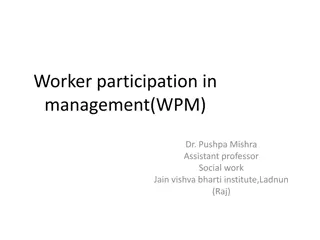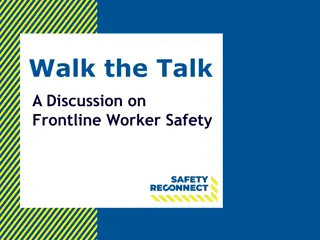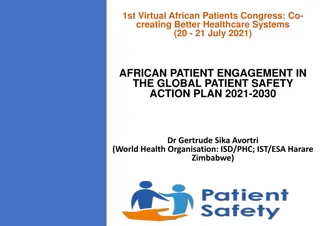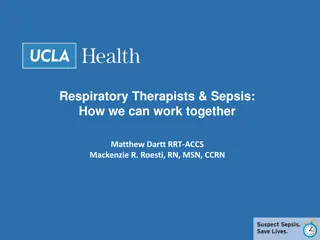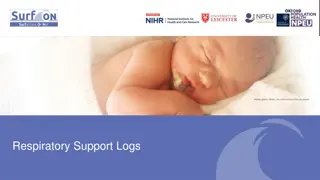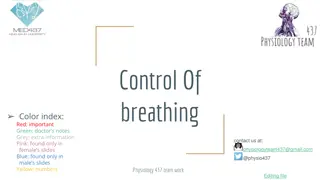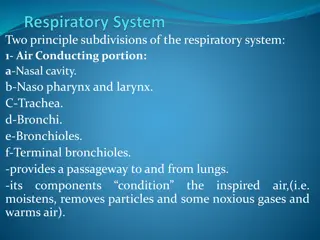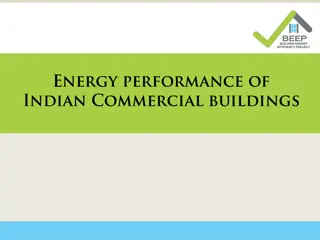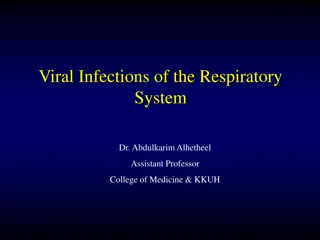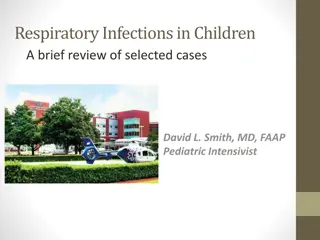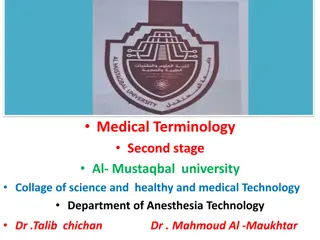Automated Respiratory Buildings for Patient and Worker Safety
In response to the COVID-19 pandemic, innovative respiratory buildings are being designed to enhance patient recovery, reduce infection transmission, and safeguard healthcare workers. Utilizing principles of breathing architecture, these structures prioritize natural ventilation, airflow, and overall well-being for improved healthcare outcomes.
Download Presentation

Please find below an Image/Link to download the presentation.
The content on the website is provided AS IS for your information and personal use only. It may not be sold, licensed, or shared on other websites without obtaining consent from the author.If you encounter any issues during the download, it is possible that the publisher has removed the file from their server.
You are allowed to download the files provided on this website for personal or commercial use, subject to the condition that they are used lawfully. All files are the property of their respective owners.
The content on the website is provided AS IS for your information and personal use only. It may not be sold, licensed, or shared on other websites without obtaining consent from the author.
E N D
Presentation Transcript
DESIGN OF INNOVATIVE AND AUTOMATED RESPIRATORY BUILDINGS FOR PATIENTS AND HEALTH WORKERS AGAINST DISEASE OUTBREAK CORONAVIRUS BY UWAZIE PRECIOUS NKEMAKOLAM 17/ENG01/032
INTRODUCTI ON With the rapid spread of severe acute respiratory syndrome coronavirus 2 (SARS-CoV-2) that results in coronavirus disease 2019 (COVID-19), corporate entities, federal, state, county and city governments, universities, school districts, places of worship, prisons, health care facilities, assisted living organizations, daycares, homeowners, and other building owners and occupants have an opportunity to reduce the potential for transmission through built environment (BE) mediated pathways
LITERATURE REVIEW The World Health Organisation s research paper Natural Ventilation for Infection Control in Healthcare Settings specifies how important ventilation is in controlling the spread of germs in medical facilities. A proper flow of air through treatment and recovery spaces helps reduce the growth of infectious illnesses while also stimulating the natural recovery process. This makes structural principles that incorporate natural airflow in perfect healthcare facility design vital. We took an in-depth look into this building trend, known as breathing architecture to determine why this design principle contributes to a more effective medical space.
It may seem unusual, but even the most minor architectural elements of your medical facility can contribute to faster patient recovery time, and improved mental and physical well-being. The basic health elements that apply in everyday life are even more applicable in healthcare facilities. We still need ample natural light exposure and regular airflow to minimise the risk of infections spreading. This makes architectural designs that consider these factors an excellent long-term investment.
Natural air flow is vital to improving a patients recovery and mental well- being. What is breathing architecture and why is it a positive influence on patient health? Breathing architecture is a principle that employs structural and aesthetic strategies to maximise the flow of natural air and improve mechanical ventilation for better indoor air quality. These practices contribute to beautiful buildings with a more open feel and improved breathability.
The positive influences of breathing architecture to maximise airflow and ventilation include: Breathing architecture helps to dilute or remove other air pollutants from high-traffic areas, as well as naturally reduce the risk of infections spreading. Breathing architecture incidentally also considers natural light as an important design element.
challenges 1. The lack of adequate infrastructure to create automated respiratory buildings for Nigerian patients diagnosed with COVID-119. 2. The lack of funding by both the private sector and the federal government to achieve this goal. 3. Nigeria doesn t have the industry that can manufacture these equipments therefore the country has to import them leading to continual reliance on foreign countries.
4. Difficulties In Ventilators Supply As intensive care units overcrowd and doctors must care for more patients, the reliability of the machines cannot be in question. But the only way to make them reliable is extensive testing, and that takes time up to two years of testing, for commercial manufacturers. This is an extremely long period under the circumstances. Many more ventilators are needed now, not later. And scientists have calculated that the development of a vaccine against Covid-19 could take up to 18 months.
RECOMMENDATIONS 1. Designing hindrances to airflow. spaces with fewer walls, pillars and other 2 Incorporating more windows and access points to the outside in the building plans. 3. Analysing natural windflow tunnels in the early facility design phase and arranging your floor plan to place areas that require high airflow the most around these spaces. For example, locating patient recovery rooms advantageous than incubators or laboratories that require stable environmental conditions. here would be more
4. Respiratory Protective Devices Respiratory protective equipment is not something that people use very often. But it is a very important measure for protection to a person, particularly during a pandemic outbreak in order to prevent the transmission of infectious diseases. Similar to SARS, COVID-19 is an extremely contagious respiratory disease that has a significant effect on society. Accordingly, COVID-19 has increased the usage of masks and caused a global shortage of supply. However, there are alternatives to masks that could protect people from deadly airborne pathogens that are worth considering.
5. Point of Care Diagnostics Point of Care Diagnostics becomes ever more important as the numbers of those diagnosed with COVID-19 increase every day. A pandemic outbreak leads to an exponential growth rate for as long as the uninfected and the infected continue to interact and there are still large numbers of uninfected people running the risk of getting infected.
CONCLUSION In conclusion, the design of innovative and automated respiratory buildings for patients and health workers against coronavirus outbreak would be very important in the process of eradicating the virus from our Nigerian society and the world at large.
